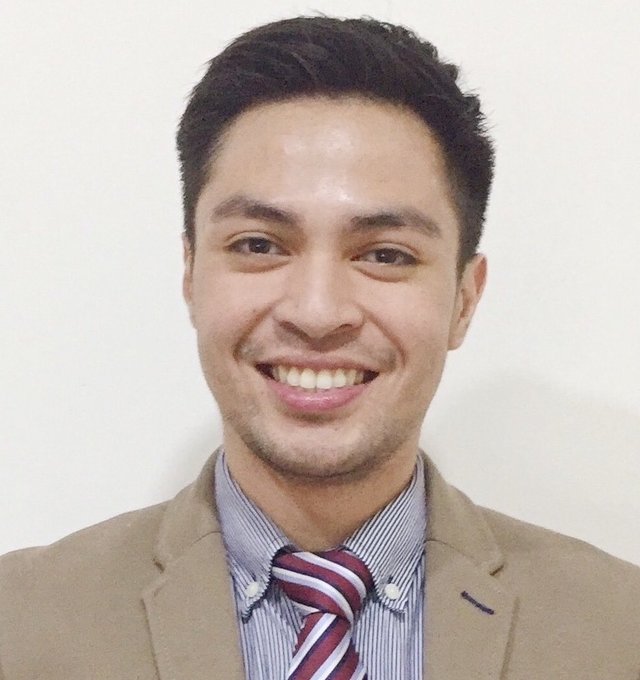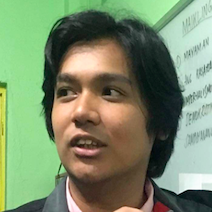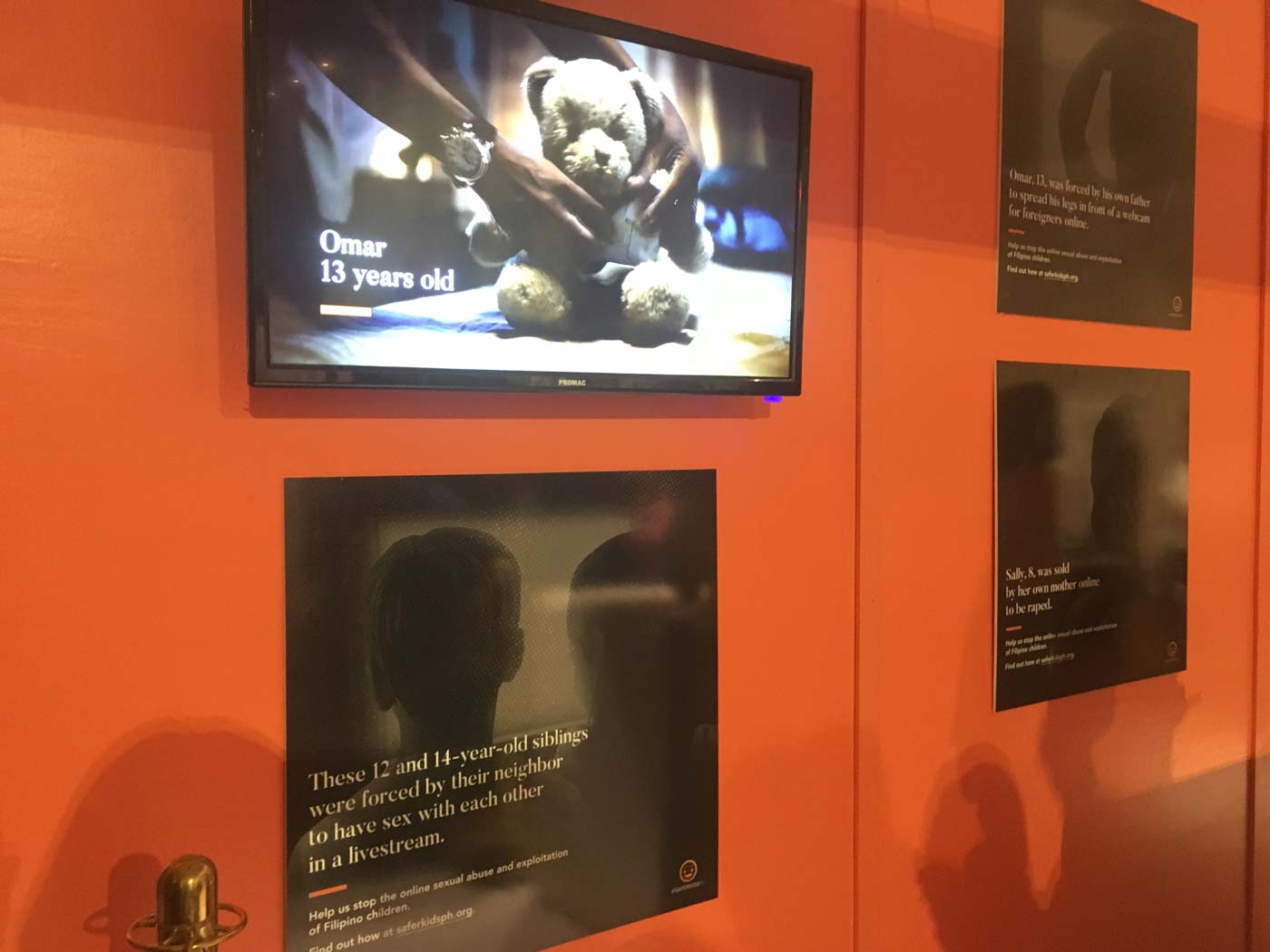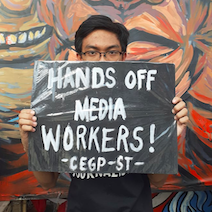![LESSONS. Advocates tackle how to provide learning opportunities to the marginalized sector during a Move huddle in partnership with the UP CESC on October 26. Photo from UP CESC]()
MANILA, Philippines – Hoping to figure out how to make education more accessible, at least 27 participants shared their ideas about potential learning opportunities for marginalized sectors during “Move Huddle: Beyond the classroom” on Saturday, October 26.
“One of the many challenges of our education sector today is its accessibility, and as part of the youth and as young leaders, we need to start making more ways to have better opportunities for the marginalized,” University of the Philippines (UP) College of Education representative to the University Student Council Kris Miranda said.
A 2018 report of the Philippine Statistics Authority (PSA) said that the country's education sector remains problematic. The Multidimensional Poverty Index in the report showed that Filipino families are most deprived in the area of education. (READ: 5 out of 10 Filipino families deprived of basic education – PSA)
The study said that 6 out of 10 families in 2016, and 5 out of 10 families in 2017 had no access to basic education. (FAST FACTS: What you need to know about the PH education system)
Based on the 2017 Annual Poverty Indicators Survey (APIS), about 9% of the estimated 39.2 million Filipinos aged 6 to 24 years old were out-of-school children and youth.
Among initiatives that the government pursued to address this problem is the implementation of the Alternative Learning System (ALS) as a practical option for those unable to access formal education in schools. (READ: Catching up on ALS: Challenges of a 'parallel system)
Aside from ALS, there are other learning opportunities that people can avail of if they have no access to formal education.
Spreading awareness
In a panel discussion, Edcel Artificio of Teach for the Philippines, Dorotea Pascual of ALS-Motortrade Life and Livelihood Assistance Foundation Inc (MLALAF), Bea Yasis of Meraquay Philippines Inc, and Eugene Solla of the UP College of Education Student Council (UP CESC) talked about the accessibility of education in the Philippines.
They pointed out that poverty, and a sparse number of learning spaces in far-flung areas are among the reasons why marginalized sectors such as indigenous peoples, out-of-school youth, children in conflict with the law, and the urban poor struggle to access formal education.
Solla added how even though free tuition law is available, there are still other factors that act as obstacles such as daily allowance, fare going to and from the school, and expenses for projects and homework.
“Hindi kasi siya natatapos doon sa matrikula lang, kailangan pa ng ibang suporta doon sa ibang aspects para maging smooth 'yung experience ng mga bata sa kanilang right to education,” Solla said.
(It doesn’t end with their matriculation. They also need support in other aspects to improve the children's education experience.)
Pascual added that these difficulties are further expounded by addiction, child labor, early marriage, and pregnancy among the youth.
The panelists also said that there are alternative ways of making education more accessible besides formal education in the classroom.
These include setting up alternative learning spaces, whether these be in covered courts or in houses; setting up an alternative learning system that’s specifically designed for the needs of the community; and conducting free reading sessions and tutorial services.
Making education accessible can also mean empowering potential and practicing teachers through workshops that empower them to think of solutions to a community problem. People may also opt to educate themselves by attending discussions and taking the time to immerse in, and understand, a community.
Pascual shared how they taught skills-training in communities where residents aged 16 years old and above were encouraged to join.
MLALAF has been conducting the ALS program in urban poor communities all over Metro Manila since 2003, providing technical skills training for livelihood.
“When they learn, they can use it for their livelihood. They usually have two to 4 clients in a day and they earn P200-250 per client. The approach was successful. Livelihood training without sacrificing their studies was applied for them to succeed and be self-sufficient,” she said.
Aside from immersion, Yasis pointed out the importance of partnership and volunteerism. She believes that even a single conversation and the willingness to help can open up possibilities in making these initiatives bear fruit.
She added that one doesn’t need to be a teacher to create learning opportunities.
“Not all of us are teachers, not all of us are professional teachers, but through volunteerism, through our own small initiatives, we can actually empower our fellow Filipinos,” Yasis added.
Pascual highlighted how community immersions are especially important in understanding the community’s needs and developing programs that are appropriate for them.
“We have to empathize with our target audience. You don’t need to teach, but you need to immerse yourself. You can’t teach students different things which are not according to their abilities, and you must know how to equip them with the necessary skills in order for them to empower themselves,” Solla added.
The panelists concluded that providing more learning opportunities will lead to citizen empowerment that will allow people to succeed and better themselves.
Artificio said that we should only guide a community to solve its problems, instead of dictating solutions that may not necessarily be applicable.
“We don’t prescribe how a community will grow. Instead, we help them to think of a solution to solve the problems within the community,” Artificio said.
The next step
Equipped with their learnings from the panel discussion, participants were asked to group themselves according to their target beneficiaries and brainstorm on a possible initiative to make education accessible to their chosen sectors.
The target beneficiaries focused on 4 sectors: urban poor, out-of-school-youth, out-of-school children, and indigenous peoples.
Each group presented suggestions which their representatives explained. Among the suggestions presented were staging a benefit concert to generate funds and resources for the building of learning centers for indigenous peoples; and conducting community profiling and developing a livelihood program patterned after the needs of the urban poor.
Meanwhile, Patricia Crisanto and Chrysaliz Gonzaga, representing the out-of-school youth group, emphasized the need for core groups that will facilitate seminar workshops focused on technical skills and networking.
Lastly, Charlina Arante from the out-of-school children group, proposed outreach programs in partnership with barangays, home-owners' associations, and churches.
Pascual reminded participants that the next step after coming up with these small initiatives is to stay committed and realize their ideas.
“Whether the impact of your projects would be short-term or long-term, what matters the most is your commitment to pursue it,” she said.
The huddle was organized by MovePH, Rappler’s civic engagement arm, in partnership with the UP CESC at Lecture Hall 1, College of Statistics, UP Diliman. – Rappler.com
Nicomedes Pagalan Jr and Raven Louise Daguro are first year students taking up Bachelor of Secondary Education, major in mathematics at the University of the Philippines Diliman. They are cub reporters of Sulo, the offficial student publication of the UP College of Education.
![]()









































